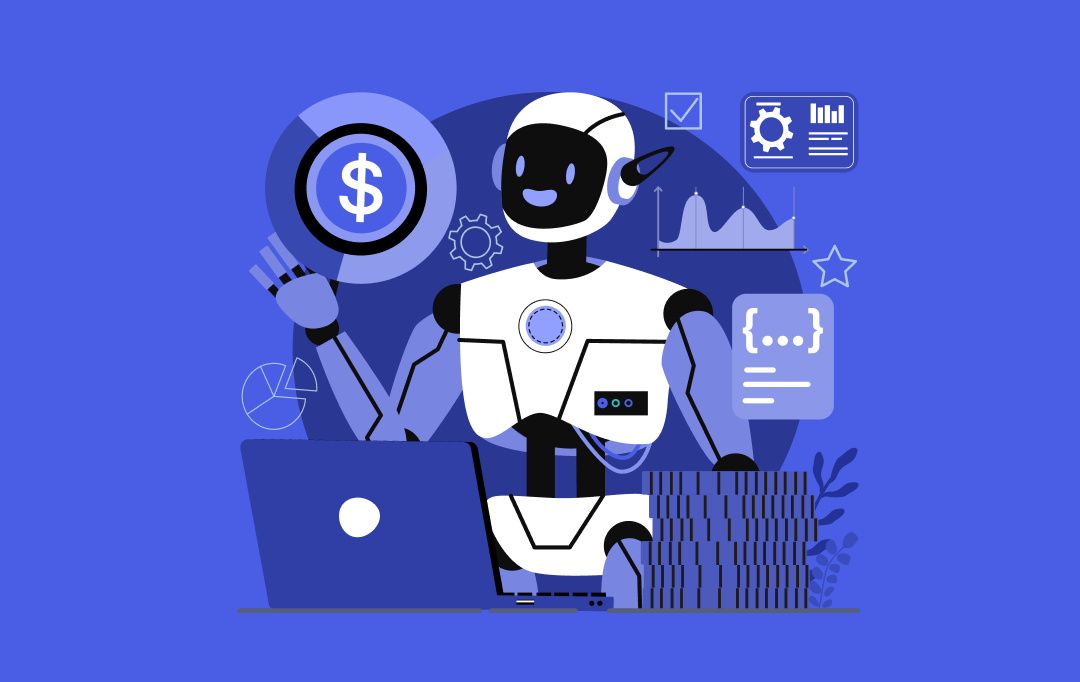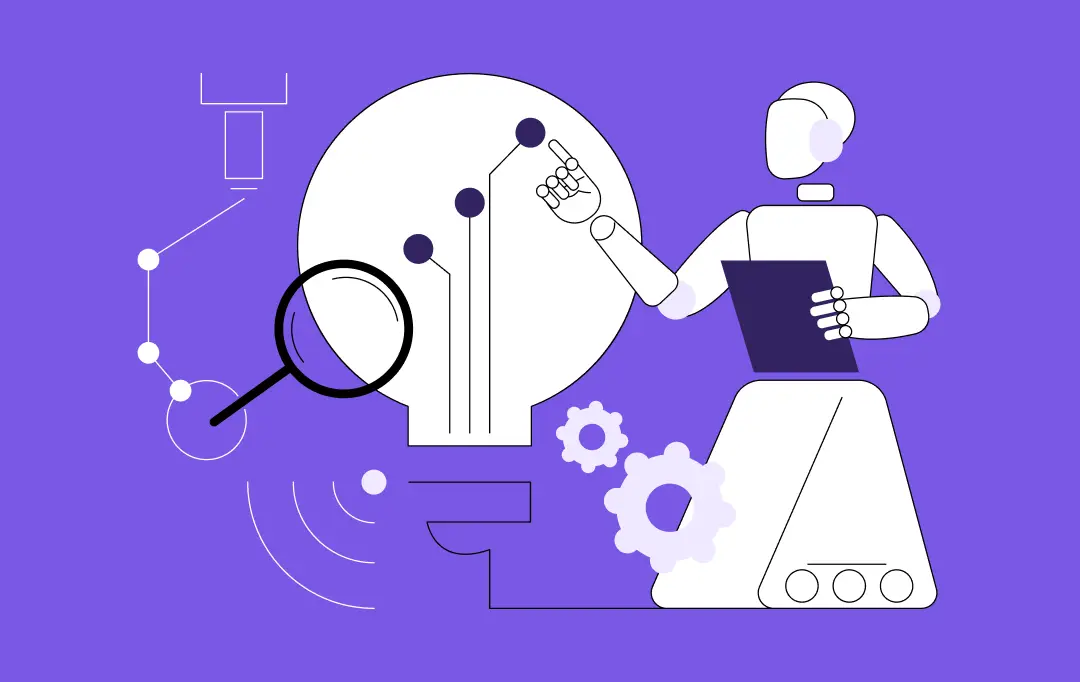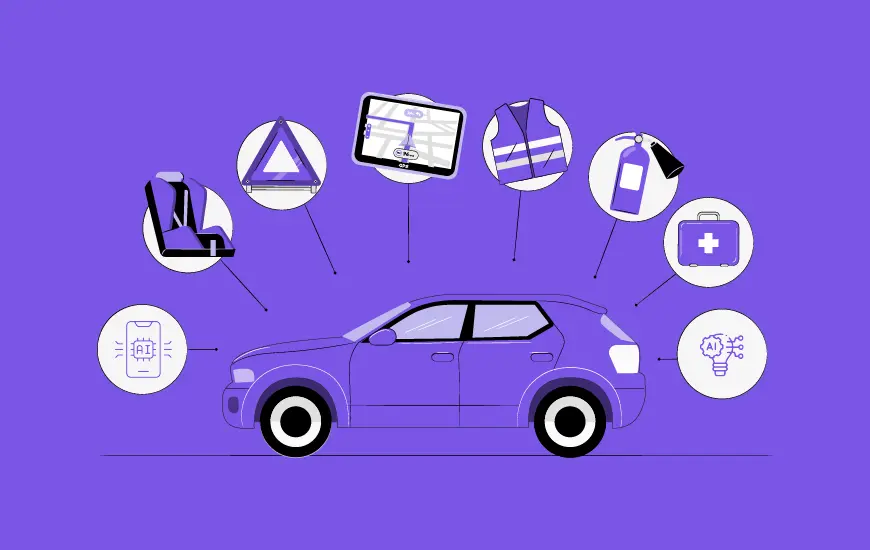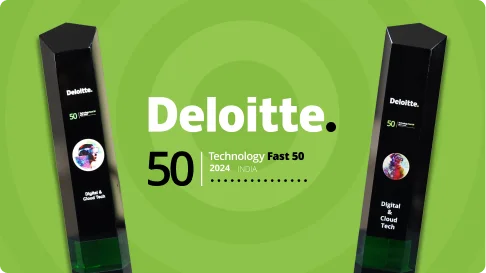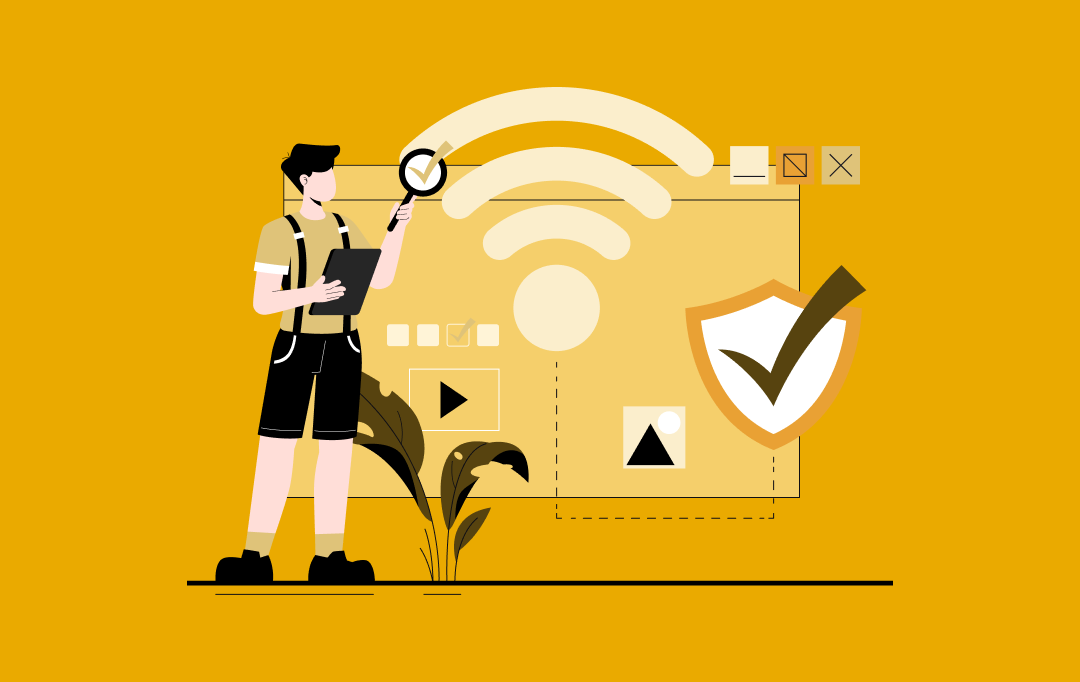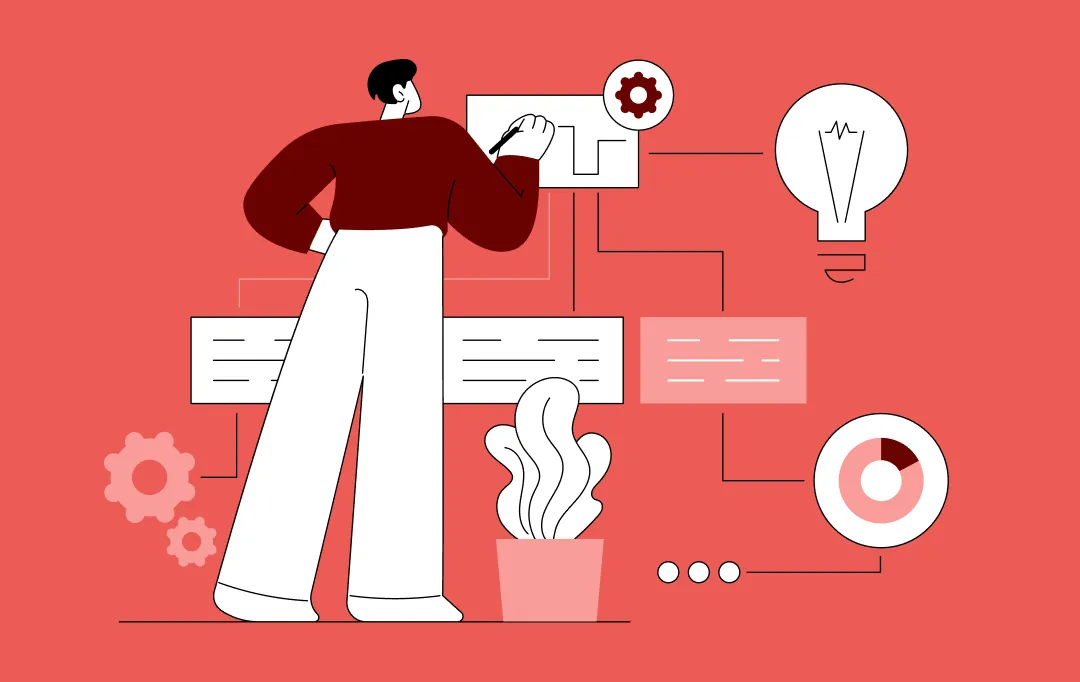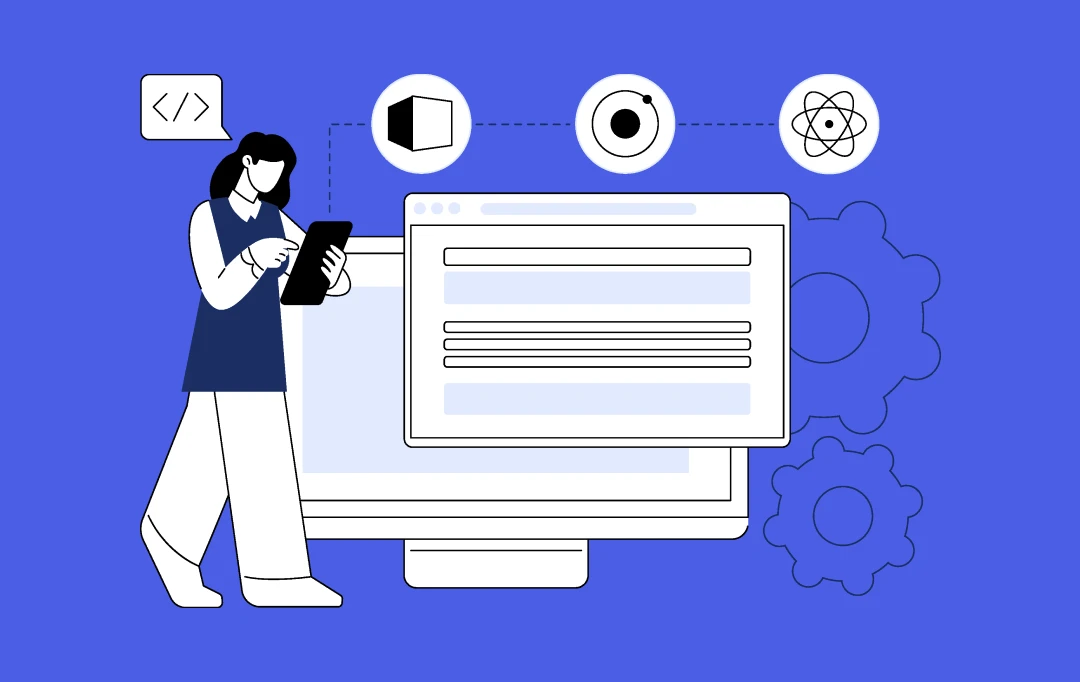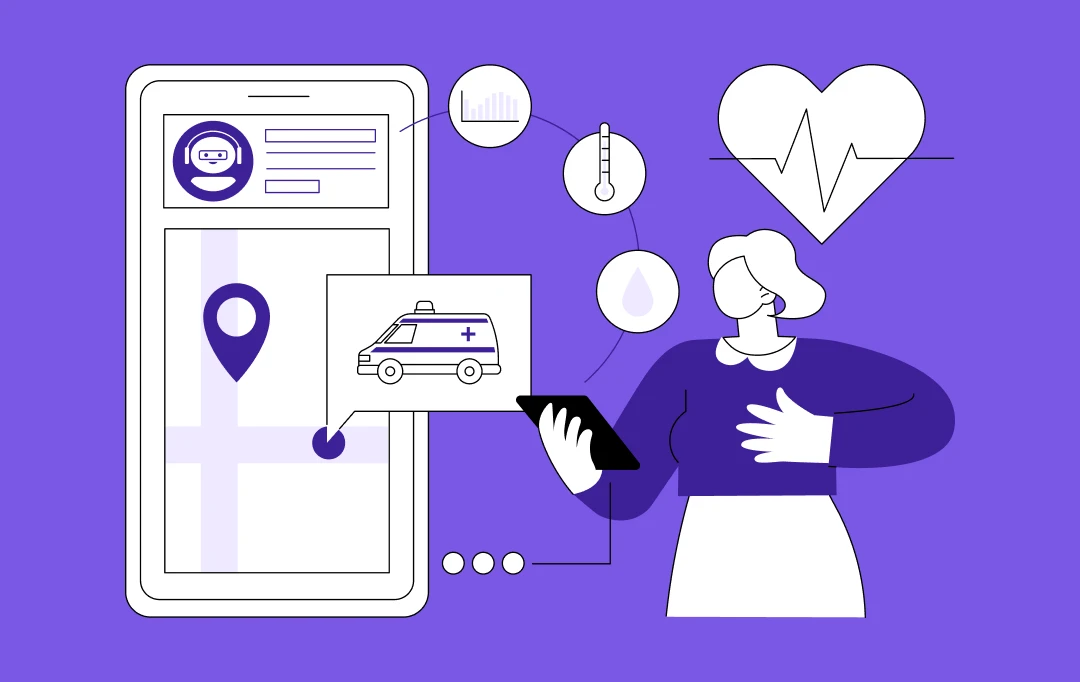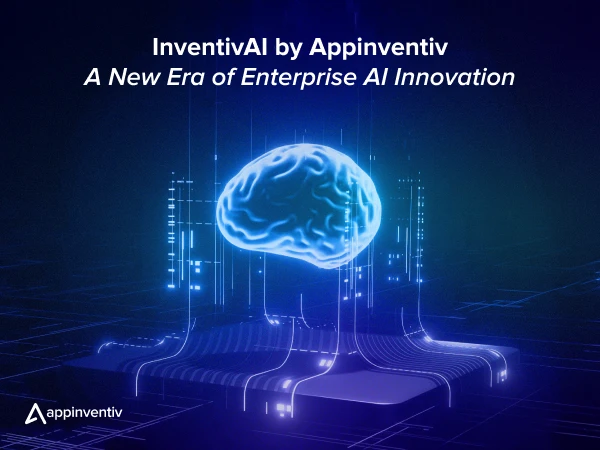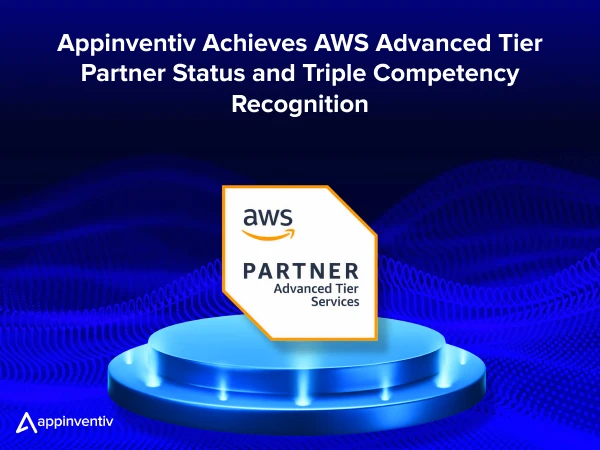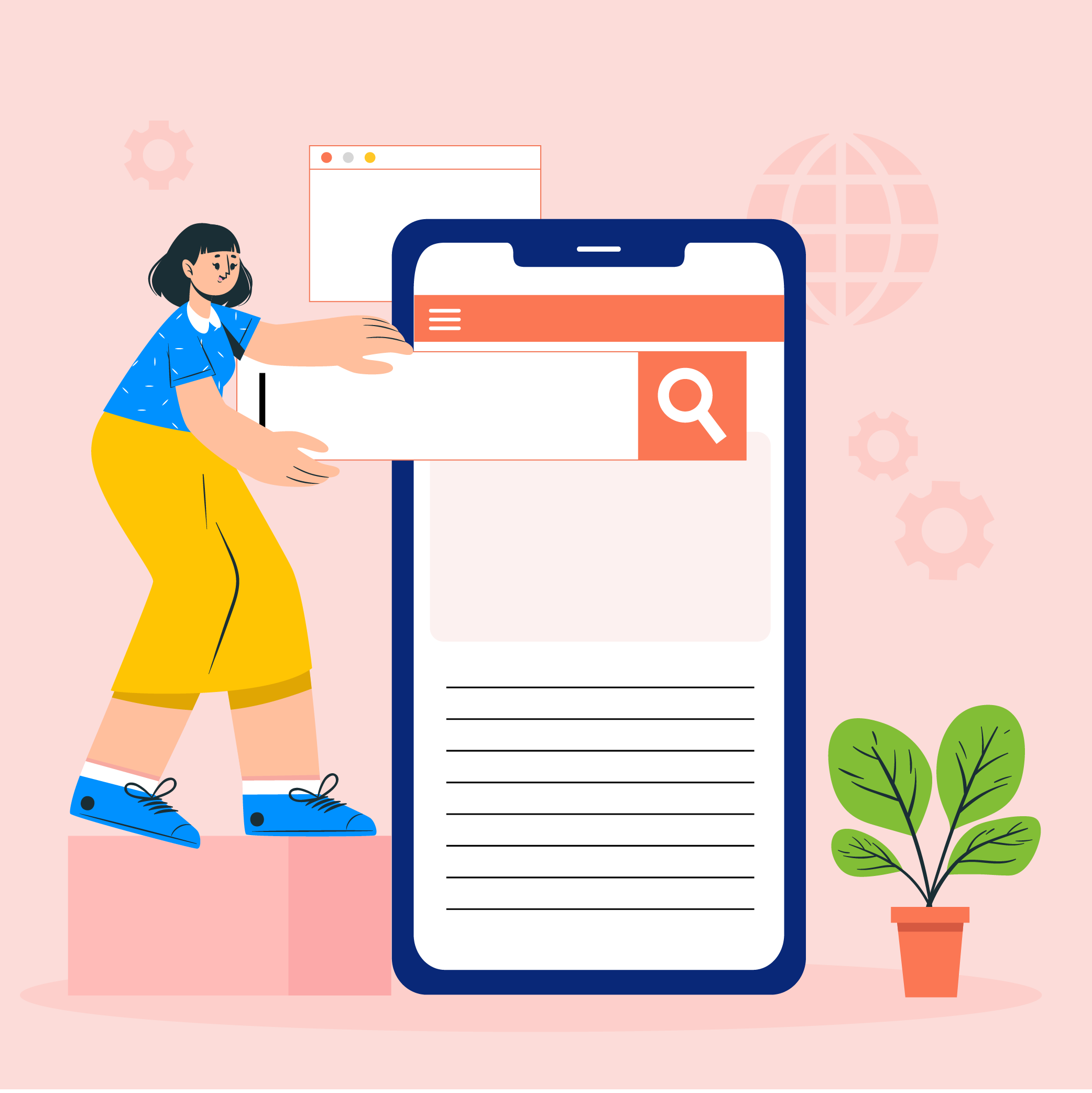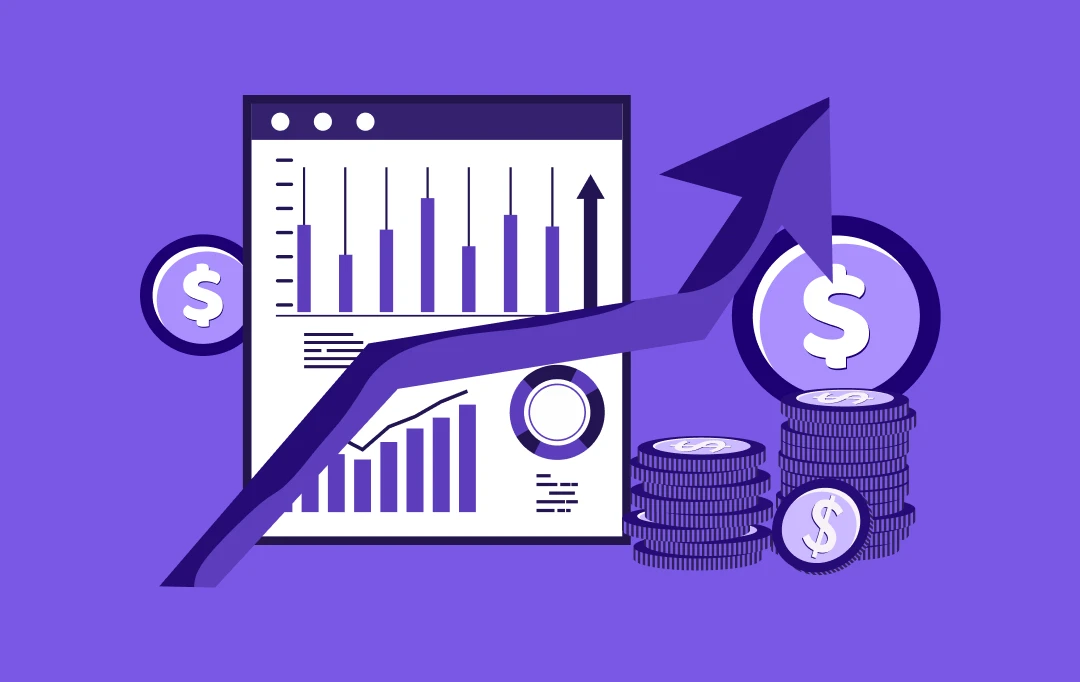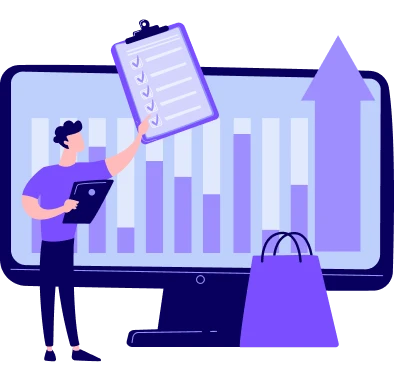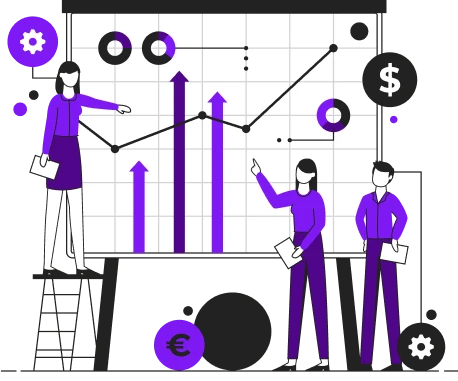- Why Do We Need Demand Forecasting?
- Popular Approaches to Demand Forecasting
- 1. Qualitative Methods
- 2. Time Series Analysis
- 3. Causal (Econometric) Models
- 4. Artificial Intelligence
- 5. Hybrid Methods
- Exploring the Different Types of Demand Planning Software
- How to Build a Demand Forecasting Software
- Step 1: State Objectives and Requirements
- Step 2: Select the correct Approach and Algorithms
- Step 3: Collected and Preprocessed Data
- Step 4: Design and Development
- Step 5: Testing and Validation
- Step 6: Deployment and Integration
- Step 7: Monitoring and Continuous Improvement
- Benefits of Demand Forecasting Software
- Better Inventory Control
- Resource Optimization and Cost Reduction
- Improved Financial Planning
- Better Customer Satisfaction
- Data-Driven Decision Making
- Cross-Departmental Collaboration
- Critical Integrations of Demand Planning Software
- Enterprise Resource Planning Systems
- Customer Relationship Management (CRM) Systems
- Inventory Management Systems
- Supplier and Vendor Portals
- Analytics Tools and Business Intelligence
- eCommerce and POS Systems
- Cloud Pages and Information Lakes
- Demand Forecasting Software Use Cases With Real-Life Examples
- Retail Inventory Management
- Supply Chain and Logistics Planning
- eCommerce and Omnichannel Operations
- Healthcare and Pharmaceuticals
- The Promotional Planning
- Key Challenges in Demand Forecasting and How to Address Them
- Selection Bias
- Data Wrangling
- Blistering Market Change (Pivoting)
- Inadequate Keeping of Historical Records
- Complexity of External Factors
- Build a Robust Demand Forecasting Software With Appinventiv
- FAQs
Key Takeaways
- Modern demand forecasting software leverages AI and real-time data to boost accuracy and efficiency.
- Custom solutions integrate seamlessly with ERP, CRM, and inventory systems for end-to-end visibility.
- Accurate forecasting reduces costs, optimizes resources, and improves customer satisfaction.
- Cloud-based, scalable platforms make advanced demand planning accessible to businesses of any size.
Demand forecasting used to be just a manual spreadsheet exercise. Now, it’s a data-powered intelligence system that significantly impacts how large companies operate globally. It mixes past sales figures, market movements, customer behavior, and external factors like weather and supply chain disruptions to accurately forecast demand. The ability to foresee customer demand, both in timing and volume, now determines how effectively a business can align its inventory, production, and logistics.
Take Walmart, for example. They use AI to power their forecasting models across their massive retail network. Every week, that system crunches data from over 500 million item-store combinations, looking at everything from weather patterns to local happenings and what people are currently buying. By pulling all those insights together, Walmart has fewer empty shelves, more products available, and a supply chain that can react quickly. The project proves that scalable data systems can turn complex retail into something proactive and predictive.
The good news is that these capabilities are no longer limited to the largest corporations. With advances in cloud computing and modern open-source frameworks, organizations of any size can now opt for demand forecasting software development that aligns with market realities. We’ve put together a step-by-step guide to building demand forecasting software, covering everything from preparing your data and integrating AI to testing the final product and deploying it in your business.
This blog takes you through everything you need to know about demand forecasting, from its purpose and software types to key features, development steps, benefits, integrations, and the challenges businesses often face. Let’s explore them.
Why Do We Need Demand Forecasting?
Demand forecasting helps organizations match production, inventory, workforce, and general resources with the expected customer demand. Proper forecasting prevents the two evils of being over-stocked and under-stocked; one results in wasted capital and wasted space, and the other in lost sales, customer impatience, and damage to reputation.
Moving excess stock out or avoiding overstocking will also result in less storage, less obsolescence, and fewer emergency procurements or expedited logistics. The demand planning and forecasting solutions market is estimated to reach $11.71 billion in 2033, indicating that more demand forecasting software is needed to suit the needs of complex business models (Source: GVR)
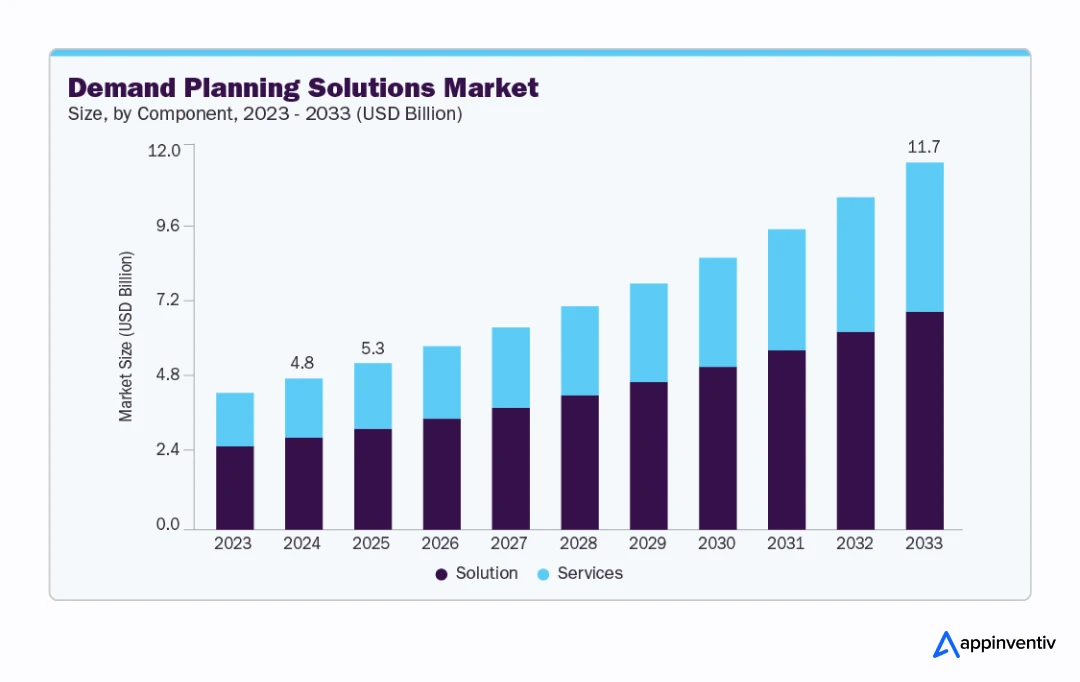
In addition to short-term cost savings, demand forecasting aids in strategic decision-making. One benefit it provides is that it allows the finance teams to see their future cash flows, operations teams to have a view of the future to plan labor, equipment, and materials, and marketing and sales teams to get data in time to plan a promotion or change in price. Stated succinctly, by anchoring decisions on credible forecasts, businesses decrease risk, enhance responsiveness, and improve their competitive advantage.
Boost efficiency and precision using AI-driven demand forecasting software
Popular Approaches to Demand Forecasting
Effective demand forecasting is based on an appropriate methodology that analyzes past data, forecasts the direction, and considers uncertainties. Various approaches fit across multiple business requirements, products, and market situations. Here are the main approaches:
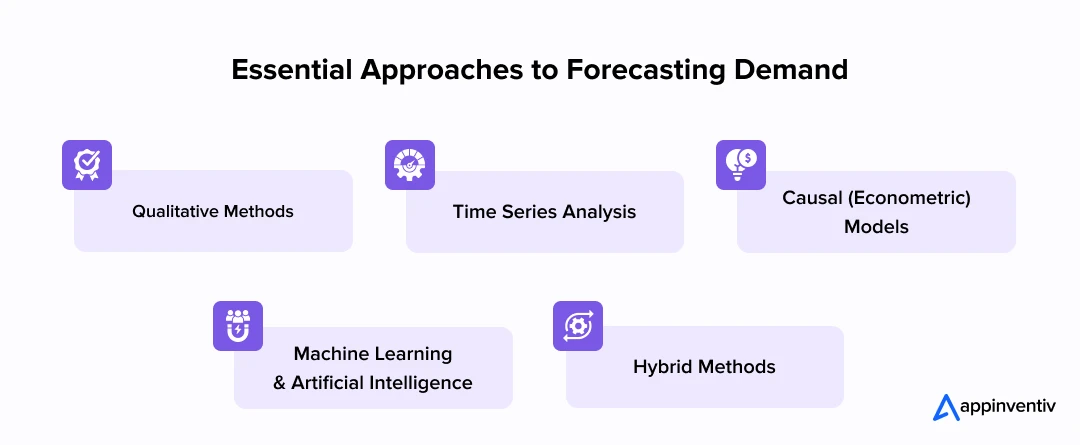
1. Qualitative Methods
They are based on the opinions of experts, research, and customer insights, compared with previous data. Methods such as the Delphi Method, focus groups, and Salesforce estimates are applied when previous data is limited or when introducing a new product. They provide directional information, helping organizations make effective strategic decisions.
2. Time Series Analysis
Time series forecasting involves the analysis of historical data to determine patterns in data, including trends, seasonality, and cyclic behavior. The most popular ones are moving averages, exponential smoothing, and ARIMA models. This approach is perfect for products with foreseeable demand trends.
3. Causal (Econometric) Models
Causal forecasting uses external factors that determine demand, such as pricing, promotional activities, economic factors, or competitor behavior. These relationships can be quantified using regression analysis and other statistical methods, and hence it is appropriate in a business with dynamic markets.
4. Artificial Intelligence
AI-based solutions leverage vast datasets and predictive algorithms to detect complex patterns and anomalies. Methods such as neural networks, random forests, and gradient boosting can adapt to changing trends and improve forecast accuracy over time. It is becoming a common practice in enterprises that require accurate, real-time predictions to develop demand planning and forecasting software.
Also Read: AI for Demand Forecasting: Benefits & Use Cases
5. Hybrid Methods
A significant number of organizations integrate qualitative, time-series, and AI-based approaches to leverage the advantages of both human knowledge and data. Hybrid models offer flexibility and are accurate and adaptable to markets that are uncertain or rapidly evolving.
Exploring the Different Types of Demand Planning Software
There are various types of custom demand planning software development and other demand planning solutions, all tailored to meet a particular forecasting and planning requirement:
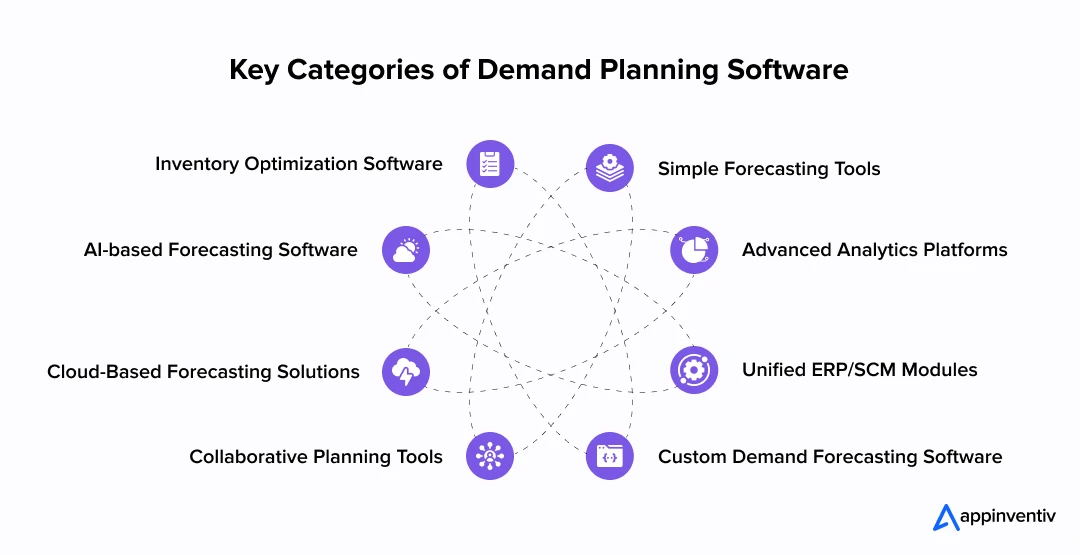
1. Simple Forecasting Tools: Entry-level tools that offer analysis of historical data and basic trend forecasting. It suits best small-scale businesses or organizations that start to plan demand structurally.
2. Advanced Analytics Platforms: They are based on statistical models, predictive analytics, and machine learning to produce very accurate forecasts. They can handle complex data, seasonal, and abrupt market changes.
3. Unified ERP/SCM Modules: Numerous enterprise resource planning (ERP) and supply chain management (SCM) applications have demand planning modules. These tools will be connected to inventory, procurement, and production operations, providing end-to-end visibility.
4. Custom Demand Forecasting Software: Custom software that is designed to fit specific business needs. They are flexible, can be scaled, and can accommodate custom, proprietary algorithms or industry-specific data to enhance forecast accuracy.
5. Collaborative Planning Tools: These types of tools are used in cross-departmental planning and allow real-time sharing of data by the sales, marketing, finance, and operations departments to enhance alignment of the forecast.
6. Cloud-Based Forecasting Solutions: These solutions are hosted on the cloud and are therefore scalable, accessible remotely, and updated frequently. They are especially applicable to organizations with more than one location or international operations.
7. AI-based Forecasting Software: They are used to understand complex patterns, trends, and demand prediction based on artificial intelligence, and predict more precisely. They can also automatically adjust to market conditions.
8. Inventory Optimization Software: Dedicated to achieving a balance between the stock and the forecasted demand, the software minimizes the unwanted stock, averts stockouts, and enhances supply chain performance.
Appinventiv’s Insights
Choose a software type that aligns with your data maturity, operational scale, and integration requirements. A basic, cloud-based solution could work well for a smaller company, whereas AI-based or custom solutions could be more beneficial for an enterprise.
Key Features of Demand Forecasting Software
The ideal software for demand forecasting should integrate advanced analytics, automation, and an easy-to-use interface. Such solutions are essential in the contemporary businesses due to the following key features:
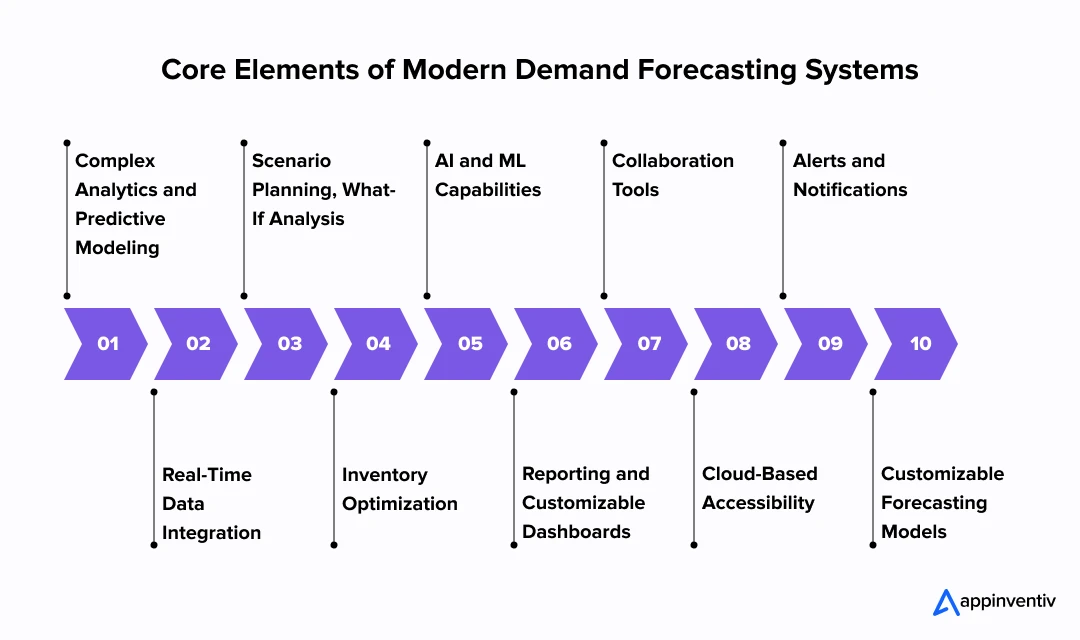
Complex Analytics and Predictive Modeling: The software applies machine learning, statistical models, and AI to forecast the demand. It can determine patterns, trends, and seasonality in historical data to produce actionable forecasts.
Real-Time Data Integration: ERP, CRM, inventory, and sales systems integration also make sure that the software works with recent data. This enables forecasts to be an indication of the prevailing market conditions, enhancing responsiveness and operational planning.
Scenario Planning, What-If Analysis: Users can model different business scenarios to see how changes in pricing, promotions, or supply chain disruptions may impact demand. This feature supports strategic decision-making and risk management.
Inventory Optimization: The software helps maintain optimal stock levels by predicting shortages or overstock. Automated notifications and reorder points lower carrying costs and avoid stockouts.
AI and ML Capabilities: Numerous solutions use AI to achieve continuously enhanced forecast predictability. Machine learning algorithms are adaptive to changing trends and anomalies, and with time, they become more predictive.
Reporting and Customizable Dashboards: The interactive dashboards provide a quick overview of forecasts, stock levels, and performance measures. Department-specific reports can be created to make informed decisions at the organization level.
Collaboration Tools: The collaborative features enable cross-departmental teams to coordinate forecasts and planning, such as sales, marketing, finance, and operations. This will ensure everyone operates on a single data set.
Cloud-Based Accessibility: Cloud integration facilitates safe remote access, scalability, and smooth updates. The software is accessible anywhere and enables teams to operate globally and work in real time.
Alerts and Notifications: Teams are notified of major demand, stock, or anomaly changes through automated alerts. This is an active quality that prevents inconveniences and provides early intervention.
Customizable Forecasting Models: Users can develop and optimize models tailored to products, markets, and business conditions. This adaptability will make the software keep in line with individual company requirements and improve decision-making.
How to Build a Demand Forecasting Software
The demand planning and forecasting software development needs to be organized to integrate data analysis, predictive modeling, and system integration. Starting with setting goals and choosing appropriate algorithms to implement, one step makes forecasts correct, practical, and goal-oriented. Here are the key steps in demand forecasting development process:

Step 1: State Objectives and Requirements
The initial one is to have a clear understanding of what you want your software to do. This may involve improving inventory management, refining sales projections, reducing operational expenses, enhancing customer satisfaction, or improving supply chain responsiveness.
It is easy to understand business objectives and customize the software to address real challenges. Determine all the possible data sources, including past sales, market, seasonal variations, customer behavior, and external economy.
- Set KPIs in the areas of accuracy in forecasts, efficiency in operations, and the reduction of costs
- Identify the level of integration required with ERP, CRM, and inventory management systems
- Identify the departments, teams, and users who depend on the software
This ensures your AI-powered demand planning software development is custom-built, delivers quantifiable results, and aligns with organizational priorities.
Step 2: Select the correct Approach and Algorithms
Once the objectives are finalized, it is time to choose the forecasting techniques and algorithms that are most applicable to your business. The variations between options include both conventional statistical models and sophisticated predictive analytics and machine learning. The accuracy and reliability of the software depend on the selected approach.
- Choose between short, medium, and long-term forecasting
- Suggest using a hybrid strategy that integrates AI models with more traditional methods to achieve higher accuracy
- Trial various algorithms using historical data in order to come up with the best and scalable solution
Selecting the appropriate methodology will serve as the basis for AI demand forecasting software development so businesses can predict customer demand, respond to market changes, and plan resources efficiently.
Step 3: Collected and Preprocessed Data
High-quality data is critical for accurate demand forecasting. Gather both internal data, which includes: ERP, CRM, and inventory systems, and also external market data. Preprocessing facilitates data cleaning, data consistency, and analysis preparation.
- Eliminate redundant, partial, or discrepant records
- Normalize formatting so as to be compatible with all systems
- Detect and control outliers or anomalies that may corrupt predictions
Correct data preparation will solidify the demand forecasting software development with AI support that can train on complete, high-quality datasets and produce reliable forecasts.
Step 4: Design and Development
Develop the software architecture to meet the business’s needs for scalability, usability, and integration. The modules to be developed should include data processing, forecasting algorithm, reporting, dashboard, and scenario analysis modules.
- Guarantee the ability to be integrated with actual ERP, inventory, and sales systems to gain real-time data
- Introduce role-based access and department-specific dashboards
- Have the option of a what-if simulation to model market or operational conditions
Many organizations prefer software development for demand forecasting to develop customized solutions that resonate with their work processes and strategic goals.
Step 5: Testing and Validation
It has been tested and validated that the software provides reliable, accurate forecasts under different conditions. Robustness is obtained by simulating past and possible future situations.
- Compare forecasts and past data to assess accuracy and identify gaps
- Test the system performance when using large datasets to scale
- Test the performance of the algorithms, data integrations, and reporting consistently
This is essential in the cloud-based demand forecasting software development, whereby enterprises can get access to accurate insights in real time across various locations.
Step 6: Deployment and Integration
Deployment is the implementation of the software to the appropriate teams and its combination with operating systems. Onboarding and proper training are the keys to adoption.
- Give each department departmental dashboards, analytics, and reports
- Allow automatic data integration of ERP, CRM, and inventory systems
- Set deviations and anomalies in demand pattern notifications and alerts
Many organizations rely on custom demand forecasting software development to ensure the deployment is fully aligned with their unique business processes and infrastructure.
Step 7: Monitoring and Continuous Improvement
Continuous monitoring is also important even after deployment. The updates and refinements enable the software to respond to new data, changing market conditions, and evolving business requirements.
- Forecast accuracy on the track and refine algorithms to increase accuracy with time
- Add new internal and external data sources as they become available
- Continuous improvement of the software features and models in line with organizational development and market dynamics
The current optimization process is the strategic direction to build demand forecasting software, which is why it will remain applicable, trustworthy, and constantly expanding for business decision-making.
Benefits of Demand Forecasting Software
Demand forecasting software helps businesses transform complex data into straightforward, actionable insights. It helps organizations predict demand changes, optimize operations, and make wiser, data-driven decisions that align with market realities. Here are some of its key benefits:

Better Inventory Control
Precise demand forecasting helps businesses maintain appropriate stock levels, preventing overstocking and stockouts. Demand planning and forecasting software development helps organizations automate inventory, forecast seasonal variation, and lower costs in storage. This efficiency also ensures that products are available when customers require them, with the least capital tied up in unutilized inventory.
Resource Optimization and Cost Reduction
Effective demand forecasting helps companies to plan production, procurement, and staffing effectively. Through demand planning forecasting software development, organizations can reduce waste, lower operational expenses, and avoid emergency logistics costs. There is efficient use of resources such as labor, raw materials, and equipment, resulting in greater operational efficiency.
Improved Financial Planning
Strong demand forecasts assist the finance group in making quality budget, cash flow, and investment decisions. With the help of the latest AI-powered sales forecasting tools, companies can create demand management software that forecasts revenue streams and balances spending with expected demand. It results in more efficient financial management and mitigates the risk of abrupt market changes.
Better Customer Satisfaction
Satisfying customer demand will always foster trust and loyalty. Building demand forecasting solutions enables organizations to keep products available on time, minimize backorders, and respond rapidly to fluctuating customer preferences. This responsiveness, along with satisfaction, helps businesses stay competitive in a rapidly changing market.
Data-Driven Decision Making
Contemporary forecasting systems examine historical data, market trends, and consumer behavior to provide teams with actionable insights. By initiating demand planning forecasting software development, businesses will be able to base their decisions on strategic, evidence-based reasoning rather than intuition alone, and enhance operational responsiveness and flexibility.
Cross-Departmental Collaboration
Demand forecasting tools that are in collaboration encourage real-time information sharing among sales, marketing, operations, and finance groups. Using these insights enables organizations to create demand management software that coordinates all departments around a single forecast. This coordination ensures a more effective planning process, improved workflows, and enhanced organizational performance.
Appinventiv’s Insights
Go beyond accuracy: develop a forecasting system that evolves alongside your business. The most useful platforms convert historical data into foresight intelligence, identifying new market indicators and customer trends before they are reflected in the reports.
Critical Integrations of Demand Planning Software
Planning software, when implemented in an effective demand planning system, does not just produce forecasts; it can also be integrated with other systems to ensure real-time data flow, operational efficiency, and informed decision-making. Demand forecasting tools have enormous potential that can only be realized through the right integrations.
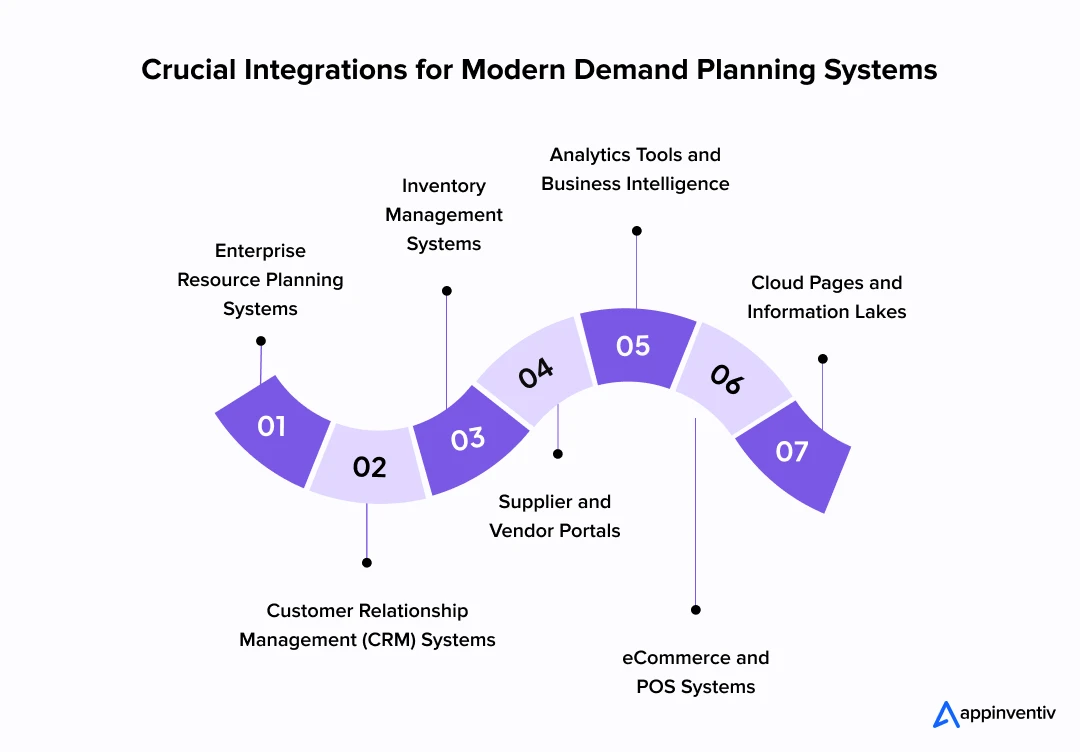
Enterprise Resource Planning Systems
ERP integration enables the demand planning software to receive real-time historical sales, procurement, inventory, and financial information. This facilitates effective predictability, synchronization of production and the supply chain, and optimizes inventory levels across all locations.
Customer Relationship Management (CRM) Systems
With the addition of CRM systems, demand planning systems will be able to use sales pipelines, customer orders, and market feedback in the prediction. This conformity will make the predictions based on the real demand trends and enhance coordination between the sales and operations teams.
Inventory Management Systems
Inventory management systems are utilized to manage inventory in an effective manner. It can be integrated with inventory management systems to feed the forecasting engine with stock, reorder points, and warehouse data. This avoids the overstocking or stockouts and helps to allocate resources more efficiently.
Supplier and Vendor Portals
Linking with supplier networks enables planners to consider lead times, production-based capabilities, and potential disruptions. This would make forecasts actionable by matching procurement to expected demand.
Analytics Tools and Business Intelligence
The integration with BI platforms will permit visualizing the demand trends, analyzing the scenarios, and measuring the performance. Teams can make decisions based on data and optimize the forecasting process.
eCommerce and POS Systems
For retailers, the ability to engage with e-commerce platforms and point-of-sale systems enables real-time tracking of sales and customer behavior. This makes forecasts based on real market action and the fast-fluctuating customer demand.
Cloud Pages and Information Lakes
Cloud integration helps in scalability, data security, storage, and accessibility. It enables cross-functional work and ensures that demand planning software has the most up-to-date information without IT bottlenecks.
Demand Forecasting Software Use Cases With Real-Life Examples
Demand forecasting software has become an integral part of business operations today, enabling organizations to make informed decisions, optimize operations, and respond promptly to market changes. Some of the important real-life applications are here:
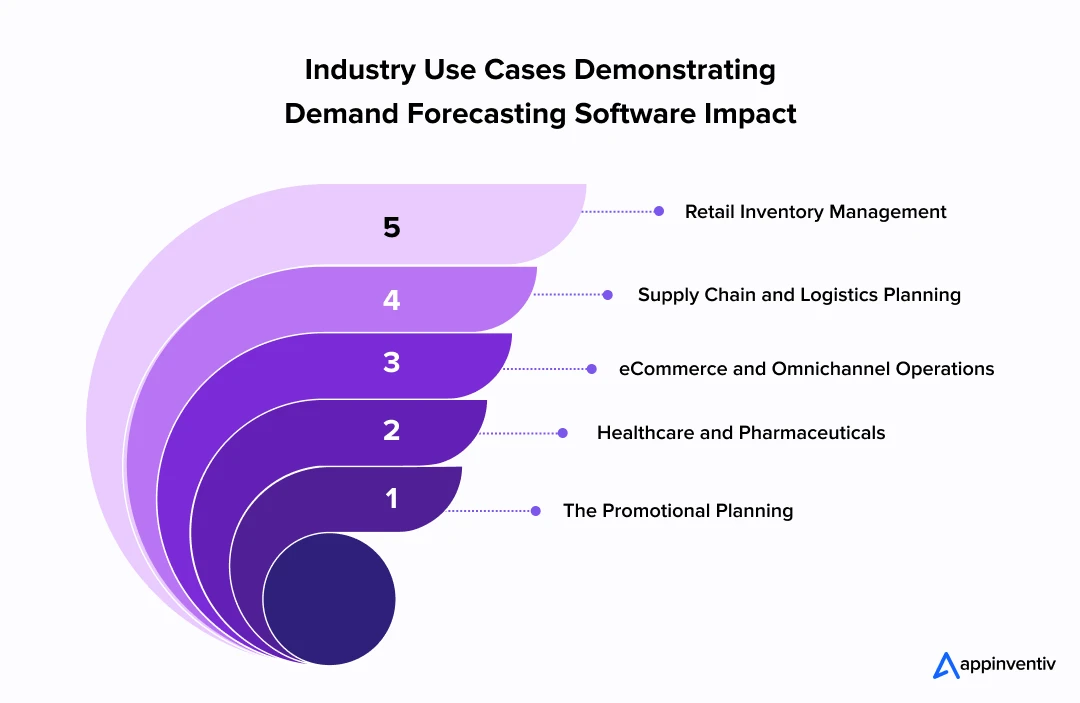
Retail Inventory Management
Forecasting helps retailers to optimize stock, avoid shortages, and reduce excess inventory. Increasingly, Walmart analyzes more than 500 million item-store combinations each week with the help of AI and enhances product availability across thousands of stores.
This demonstrates how demand planning forecasting software development can make inventory management responsive, proactive, and highly efficient, grounded in data.
Supply Chain and Logistics Planning
Predictive software is adopted by manufacturers and logistics providers to synchronize the production process, transport planning, and distribution. Procter & Gamble incorporates AI predictive models into its supply chain, minimizing waste and delays.
The same outcomes can be achieved when companies invest in demand planning and forecasting software development, leveraging historical trends and real-time operational data to make smarter decisions.
eCommerce and Omnichannel Operations
eCommerce systems such as Amazon predict demand at the SKU level to maximize their warehouse fulfillment and effective promotion. Proper predictions prevent stockouts and minimize overstock risks.
Organizations planning to create demand management software can use the same predictive models, based on products, customer behavior, and seasonal trends, to maintain operational efficiency and increase customer satisfaction.
Healthcare and Pharmaceuticals
Predictive analytics is used by hospitals and pharmaceutical companies, including Pfizer, to forecast demand for medicines and equipment, enabling them to be produced and distributed on time.
Tailor-made solutions enable analysis of past, seasonal, and emergency patterns, helping healthcare professionals allocate resources wisely and provide continuous patient care across facilities.
The Promotional Planning
The fashion industry, such as Zara, uses AI to predict demand across different seasons and schedule production cycles before market trends. Predictive models help regulate stock levels, maximize promotions, and reduce overproduction.
By leveraging demand planning and forecasting software development, the business is better able to respond to consumer behavior and reduce operational waste during peak seasons.
We’ll guide you in leveraging advanced forecasting software to predict trends, manage resources efficiently, and respond quickly to change
Key Challenges in Demand Forecasting and How to Address Them
Demand forecasting is critical for inventory management, production planning, and strategic decision-making. However, forecasters often face challenges that can significantly impact accuracy. With the right preparation and tools, these challenges are surmountable.
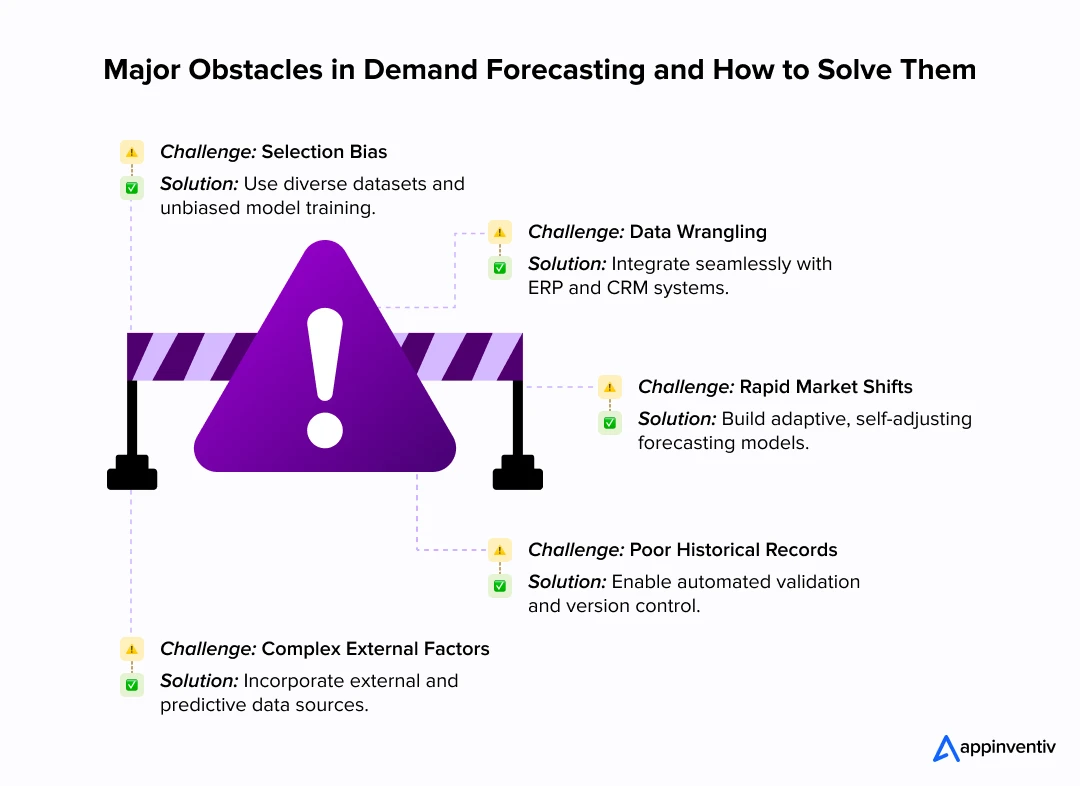
Selection Bias
Challenge: Survey-based, customer-based, and internally based forecasts may be biased. Customers who have extreme experiences or sales teams with positive forecasts are likely to introduce bias into the important forecast data, unwittingly.
Solution: Build demand forecasting software with statistical correction tools, AI-assisted analytics, and multi-source data integration. This is a moderate way of combining subjective input with objective historical and market data to enhance accuracy and reliability.
Data Wrangling
Challenge: To have good forecasts, high-quality, and accessible data is necessary. However, the lack of coherent systems, old software, or databases in many organizations is a problem because it may be hard to consolidate and process information effectively.
Solution: Introduce custom demand forecasting software development that centralizes information from various sources, automatically cleans and validates it, and seamlessly integrates with ERP, CRM, and inventory systems. This will reduce manual work and shorten forecasting time.
Blistering Market Change (Pivoting)
Challenge: Customer behavior and company activities influence consumer demand. Abrupt changes in strategy, product releases, or marketing campaigns may make the forecast very volatile.
Solution: Develop the demand planning and forecasting software that includes scenario modeling, what-if analysis, and real-time analytics. A system powered by AI enables models to respond to market changes quickly and remain accurate during rapid pivots.
Inadequate Keeping of Historical Records
Challenge: Historical data is usually unavailable, inconsistent, or unreadable in incompatible formats. Mistakes or non-standardized documentation are likely to compromise forecast accuracy and may complicate automation with advanced forecasting software.
Solution: Invest in custom demand planning software development to develop systems that standardize, clean, and organize historical data. Automatic validation and version control maintain the accuracy of historical records and can be used in long-term forecasting.
Complexity of External Factors
Challenge: External factors such as competitor activities, regulatory changes, economic shifts, and supply chain disruptions can significantly affect demand, and forecasts are untrustworthy unless they are factored in.
Solution: Deploy demand planning and forecasting software development that can incorporate external datasets and predictive models. This enables the software to capture broader market forces, helping organizations make sound decisions even in unpredictable situations.
Build a Robust Demand Forecasting Software With Appinventiv
Proper demand forecasting enables organizations to optimize stock levels, simplify the supply chain, minimize waste, and respond promptly to market variability. As data volumes grow and customer needs change, it is no longer sufficient to rely on manual forecasting techniques or off-the-shelf applications. Companies require smart, powerful software to analyze past trends, combine various data, and provide real-time actionable information.
Custom demand forecasting solutions play an important role here. Appinventiv is an expert in creating custom platforms that match your specific operations requirements. Together with AI-based predictive systems, the ability to scale to the cloud, and the integration of the solutions with the existing ERP, CRM, and inventory systems, we develop solutions that enable businesses to plan better and be proactive.
Since requirement analysis and data modeling are the starting points for deployment and post-launch support, our custom software developers ensure that each development process step is optimized for performance, reliability, and business impact.
Collaboration with Appinventiv requires converting raw data into strategic foresight. With a background in developing custom demand forecasting software, we can not only predict demand but also gain a competitive advantage by making wiser, quicker, and more informed decisions. By watching our client testimonials, you can understand the wide range of projects we have covered over the past decade and how we helped our clients succeed.
Reach out to our data analytics services team today and discuss how we can craft demand forecasting software tailored to your needs.
FAQs
Q. Why is custom demand planning software feasible for enterprises today?
A. Here are some of the reasons to use demand forecasting software for enterprises:
- Scalability and Flexibility: The current integration of cloud and AI allows the development of customized systems that can adapt to the changing needs of business.
- Cost Efficiency: Custom platforms eliminate the need for multiple disconnected tools, reducing long-term operational costs.
- Integration Capabilities: They integrate with the ERP, CRM, and supply chain systems to access the data in unison.
- Informed Decisions: Businesses can have a better understanding of the tendencies of customers and the accuracy of inventory planning.
- Strategic Advantage: Custom solutions are more accurate and agile than traditional tools, which provides a competitive advantage.
Q. How is the pricing determined for demand planning software development?
A. Cloud-based demand forecasting software development pricing is based on the complexity of the project, the range of features, volume of data, integration, and technology stack. The costs can also vary depending on the level of analytics, AI automation, and cloud hosting. A customized estimate is usually given to enterprises following an evaluation of their goals and technical setting.
On average, the demand planning software development cost typically ranges from $150,000 to $350,000 or more, taking into account all the factors that impact the overall cost. Connect with our experts to get the complete cost estimation.
Q. How long does it take to develop a custom demand forecasting solution?
A. The schedule of development for a custom solution will depend on the size of the project, the complexity of the data, and the integration requirements. The average demand planning software development project takes 3–8 months and covers requirement analysis, UI/UX design, data modeling, development, testing, and deployment. Enterprise platforms that are larger, with AI-based forecasting and multi-module integration, might take longer.
To ensure timely delivery and precise execution, it’s important to hire the right demand planning software development services provider, one that understands both the technical and strategic aspects of enterprise forecasting.
Q. How do we ensure data security in our demand management solutions?
A. As a demand planning software development company, we place data security as a priority at all levels. Sensitive data is secured using encryption, role-based access, secure APIs, and adherence to GDPR and ISO standards. We also continuously conduct vulnerability tests and ensure multi-factor authentication to enable safe access, whether on-premises or in the cloud.
Q. How does Appinventiv’s demand forecasting software development differ from off-the-shelf solutions?
A. Here’s how Appinventiv’s demand forecasting software development differs from off-the-shelf solutions:
- Customized Development: The demand forecasting software we develop is customized to your business objectives, data format, and business processes.
- Scalable Architecture: We build scalable frameworks that adapt to future data growth and market shifts.
- Smooth Integration: Custom systems seamlessly integrate with existing ERP, CRM, and logistics systems.
- Greater Precision: AI-based predictions are tailored to your specific business setting.
- Dedicated Support: This will include continuous improvement, updates, and maintenance after launch to ensure performance is sustained.
Q. What key technologies does Appinventiv use in demand planning software development?
A. The tools and frameworks used at Appinventiv include:
- AI and ML models, predictive analytics, and automatic forecasting
- Scalability and secure deployment of Cloud Platforms (AWS, Azure, GCP)
- Large-scale data processing using Hadoop and Spark Frameworks
- APIs and Microservices Architecture to work in harmony with third-party systems
- Interactive dashboards with data visualization
- Tools such as Power BI and Tableau
Q. Can our software integrate with your existing systems?
A. Yes. We build demand forecasting software that can be easily integrated with ERP, CRM, SCM, and POS systems. They facilitate coordinated data flow that facilitates real-time understanding within the departments. You can use a legacy system or a cloud platform, but we code up integration layers so we can easily enable interoperability and minimize disruption during deployment.
Q. What kind of support do we provide after software implementation?
A. Once deployed, our team provides end-to-end post-deployment services such as software maintenance, updates, and performance monitoring. We offer training for internal teams, troubleshooting of system problems, and continually updating models as new data becomes available. We are determined to make sure that your demand forecasting platform is reliable in the long term and that it brings maximum ROI.


- In just 2 mins you will get a response
- Your idea is 100% protected by our Non Disclosure Agreement.
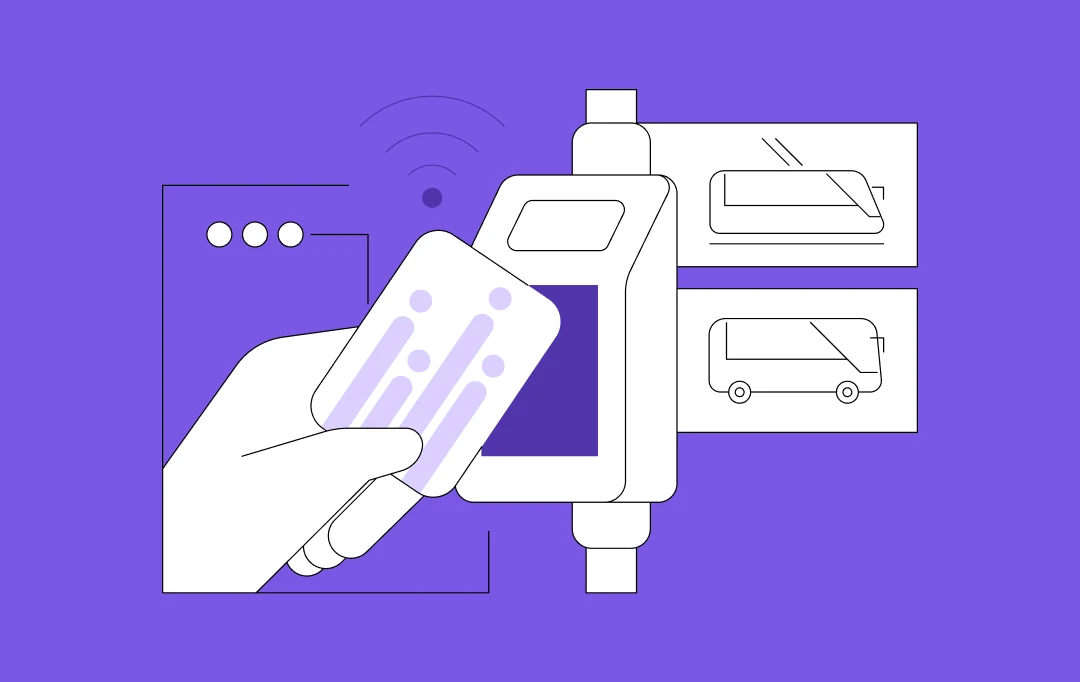
How to Build an RFID Asset Tracking System in The UAE?
Key takeaways: The success of an RFID asset tracking system is dictated by the quality of the custom software and middleware, which must transform voluminous raw tag data into actionable intelligence. Implementation of RFID systems requires a managed, multi-stage process, moving logically from Integration Consulting and architectural design to Continuous Monitoring and Optimization, which is…
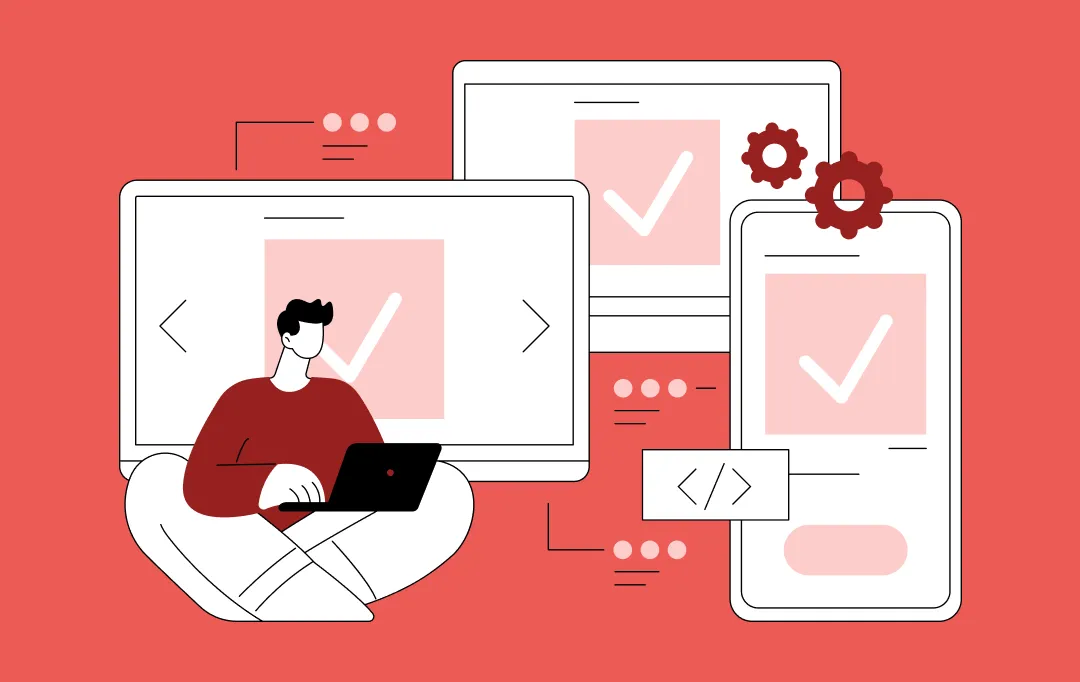
How to Build a White-Label Grievance Management Software? Process, features, costs
Key Takeaways White-label grievance management software allows businesses to quickly implement, rebrand, and scale solutions without reinventing the wheel. The development process involves multiple stages, including requirement gathering, workflow design, tech stack selection, and ensuring compliance and scalability. Key features include multi-channel intake, automated routing, customizable workflows, AI-driven categorization, and built-in compliance and security. Costs…

How to Build a Cloud Kitchen Management Software: Process, Features, and Costs
Key takeaways: Cloud kitchens are changing how food businesses work. They rely on delivery platforms, data, and speed instead of tables or fancy décor. A good management system keeps every part of the kitchen connected. Orders, inventory, staff, and deliveries all flow together in real time. Building the software is a step-by-step job. It starts…
